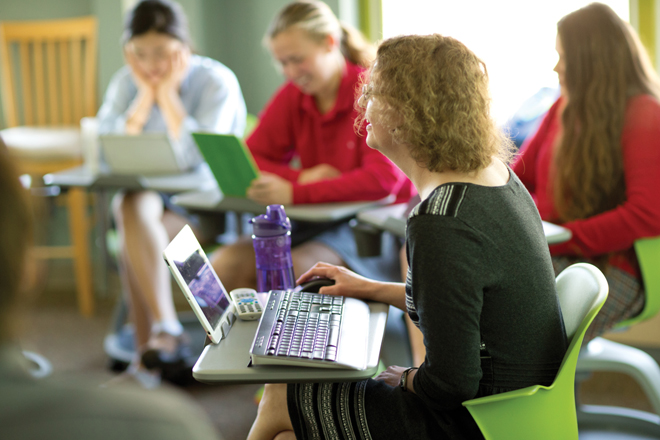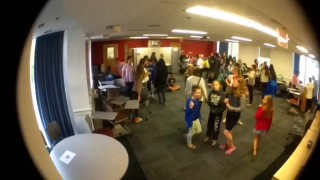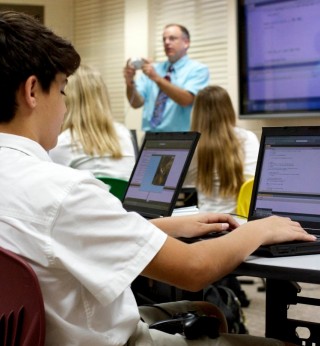Annotation, sentence fragments, run-on sentences, and comma splices are conventional grammar topics for high school students, but the way they are taught in Laura Howard’s English II class is a departure from the norm.
As one of three members of the English faculty selected to teach in experimental classrooms, Howard is teaching students in a colorfully designed space with brightly colored movable furniture, multiple projectors that show different images, and walls with writing surfaces covered with floor-to-ceiling IdeaPaint.™ In a matter of seconds, students can split into groups for a particular task, then roll back into a circle, depending on the nature of the class work. Howard can project grammar examples on one wall, and the entire class of 13 can show their work on the other walls.
One student says everyone adjusted pretty quickly to the new set-up and believes the design helps facilitate class conversation in a way that solitary desks cannot. “I love how everyone can participate in activities using the projectors on both sides of the room by writing answers on the whiteboard wall,” she adds.
From her perspective, Howard says the space requires a different kind of planning now that she is utilizing three walls and a projector, but she believes the space helps keep students more active and more engaged. “I still teach the same books, but the technology and the design help facilitate what I am trying to do.”
Howard is the kind of teacher who enjoys using technology but she realizes that classrooms with desks on wheels and markers on walls might not be for everyone. “There is an inherent chaos in students up and moving and working on multiple tasks at one time, but the benefits of the technology and design outweigh the risks. Also, a teacher in this kind of space can’t be intimidated by technology or letting students take the lead. One of the reasons it works for me is that I love playing around with technology and new ways to approach learning.”



